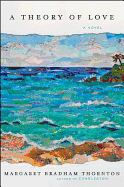
Some places are made for romance. In Margaret Bradham Thornton's A Theory of Love, one of those places is the fictional enclave of Bermeja on Mexico's rugged Pacific coast, south of Puerto Vallarta. Rich artists and wealthy global moguls gather there in casitas carefully designed to capture the area's views and color. On assignment to do a story on Bermeja's Italian developer, British journalist Helen Gibbs meets the Franco-American lawyer, entrepreneur and occasional surfer Christopher Delavaux.
Too smart and clever to be overwhelmed by only physical attraction, Helen and Christopher banter about language (his favorite word is the Italian sprezzatura, which he translates as "studied nonchalance") and the excesses of the well-heeled players around them. When he leaves a respected law firm in New York City to launch his own investment advisory house in London, they reconnect and easily glide into love and marriage. With a little mews house to call home, Helen revels in the excitement of dinners with Christopher's prospective clients, weekends in the country and interesting reporting assignments. But one cannot live on fancy ceviche and massive English manors alone. As Christopher focuses on building his business, Helen chafes and wonders when they will have leisure time again.
With chapters skipping across both the cosmopolitan and remote turfs of the wealthy, A Theory of Love is a portrait of romance among the 1%. Yet it is pulled back to earth by the self-reflective, unpretentious Helen, who centers Thornton's narrative. She learns that falling in love is easy. Overcoming a spouse's obsession with work and personal indifference is much harder. --Bruce Jacobs, founding partner, Watermark Books & Cafe, Wichita, Kan.

